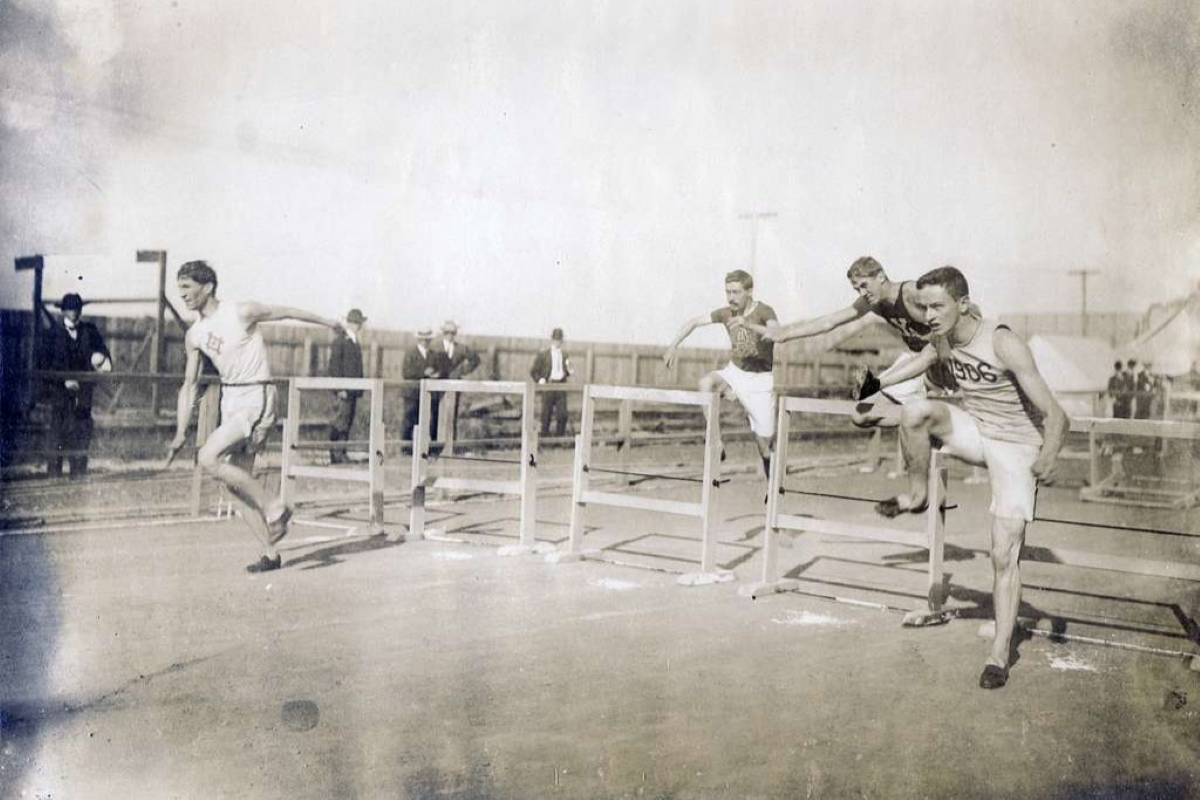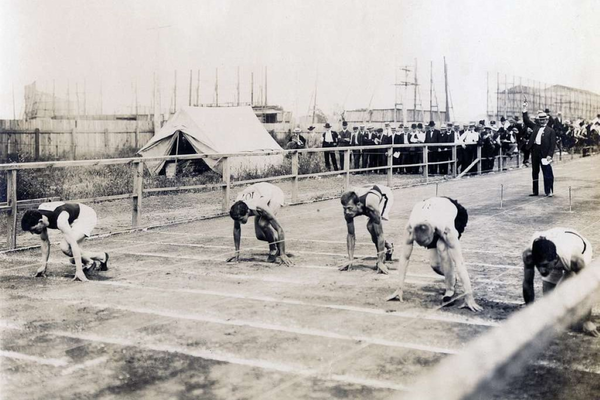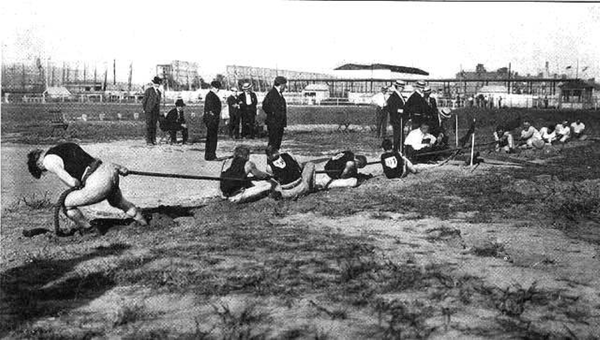

The very first anomaly at the 1904 St. Louis Olympics was not even the primary event, despite bearing the moniker. Originally scheduled for Chicago, the organizers thought it was better to collate the games, merging them with the Louisiana Purchase Exhibition, also known as the St. Louis World’s Fair. However, this decision contributed to the creation of perhaps the most unique and significant Olympic gold medals in history, including the track & field medal up for auction.
Watch What’s Trending Now!
Today, an over 120-year-old original Olympic gold medal has found its way to the RR Auction. “Extraordinarily elusive gold winner’s medal awarded to an elite hurdler at the St. Louis 1904 Olympic Games” on their website. So besides belonging to a track and field legend, what else makes this medal unique enough to command an asking price of $185,090?
ADVERTISEMENT
The qualities that give the 1904 Olympics medal historic significance
Firstly, the auction site doesn’t reveal the owner’s name. However, Olympics.com lists Michigan Wolverines track & field icon Frederick Schule as the recipient of the medal. The University of Michigan even inducted ‘Fred’ Schule into its Hall of Fame in 2008 thanks to his achievement. And while Schule passed away at 82 in Poughkeepsie, New York, his legacy lives on in this medal.
However, the man who clocked 16:00 to win the medal is only the tip of the proverbial iceberg. The Dièges & Clust-designed St. Louis medals were far more unique than any other medal made before or after 1904. The very first reason is that in 1094 the Olympics introduced the now-familiar gold, silver, and bronze medal tiers. Secondly, there are features that no other medal has.
ADVERTISEMENT

ADVERTISEMENT
One side of the medal was inscribed with “Olympiad, 1904,” featuring a victorious athlete holding a wreath in front of an ancient Greek athlete frieze and the Acropolis. However, there was one wholly unique inscription on this track & field and every other medal from 1094. Besides depicting Nike, the goddess of victory, alongside a bust of Zeus, the reverse side bore the inscription, “UNIVERSAL EXPOSITION ST. LOUIS U.S.A.,” according to the official listing on RR Auction and Olympics.com.
The official Olympics website also divulges another crucial and unique element of the medals. “For the first and only time, the medal was attached to a coloured ribbon with a pin to fix it to the athlete’s chest,” read the description. The official listing has high-resolution images depicting all these elements, including the multicolored strap and an intricately crafted metal pin.
In July, RR Auction’s executive vice president Bobby Livingston estimated the price of the average Olympic medal at auction. Livingston remarked a medal from Paris would fetch between $15,000 and $30,000 right after the games. Even older medals may fetch far less or more than the $185,000 depending on the historical significance, condition, the medal’s owner, and the story behind it.
ADVERTISEMENT
One of Jesse Owens’ 1936 medals holds the record for the most expensive ever sold at nearly $1.5 million. This particular medal’s value soared not just because of its rarity but also due to Owens’ legendary feats, including breaking three world records and tying another in under an hour at the 1935 Big Ten track meet in Ann Arbor, Michigan. Its exceptional preservation and connection to Owens’ iconic legacy made it a standout piece and added to its value.
Livingston said, “The story behind the medal can significantly impact its value. Medals sold for charitable causes or those with a well-documented history can attract higher bids.” Considering these factors, the $185K sale has certainly exceeded expectations. So what unique history that made the 1904 games unforgettable has pushed it beyond the average Olympic medal?
ADVERTISEMENT
Some striking oddities: From track & field to women’s sports
Since the medal up for action is from the track and field events held at the 1904 Games, here is a fun fact about one of them. Although tug of war has disappeared from the Olympics, the St. Louis Summer Games were the second Olympiad to include it. Unfortunately, the war didn’t return after 1920. Yet that wasn’t even the wildest track-related story from the games.
The most sensational controversy happened during the marathons. The Smithsonian Magazine reported that the 24.85-mile course, while slightly shorter than today’s courses, was far less running-friendly. Parts of the course had an inch of dust on them. What the initial winner, Frederick Lorz, did proved just how difficult things got.
Lorz hitched a car ride during part of the race before getting off and crossing the finish line. Although initially greeted with cheers, the crowd soon booed, and American Thomas Hicks was crowned the winner. However, the track & field controversy silently masked another part of Olympic history involving women’s sports.

While boxing made its Olympic debut at the historic Olympics, women’s boxing wasn’t part of the official program. The History Channel reveals that the women’s competition became one of the “display events,” and no medals were handed out. Then the event itself disappeared from the games before finally returning during the 2012 London Olympics.
Other women’s sports didn’t fare well either. In fact, the only official women’s event at that year’s summer games was women’s archery. So it’s fair to say that the gold medal is also a stark reminder of how far women’s sports have come in the Olympics. Paris 2024 was the first Olympics to achieve parity between male and female athletes, and the women ended up scoring more medals.
“Women were not supposed to be athletes. Women were not supposed to be doing anything but bearing children and cooking in the kitchen. And now we have the most medals,” Olympic long jump champion Tara Davis-Woodhall said after the 2024 Paris Olympics. It’s as if the more you dig, the more history is linked to the 1904 medal.
After the 14 bids, the current value of the Olympic medal stands at $168,209, with the next bid starting at $185,000. However, the final price could exponentially increase because it’ll run until January 17. What do you think the final price could be? Tell us in the comments.
ADVERTISEMENT
ADVERTISEMENT
ADVERTISEMENT

